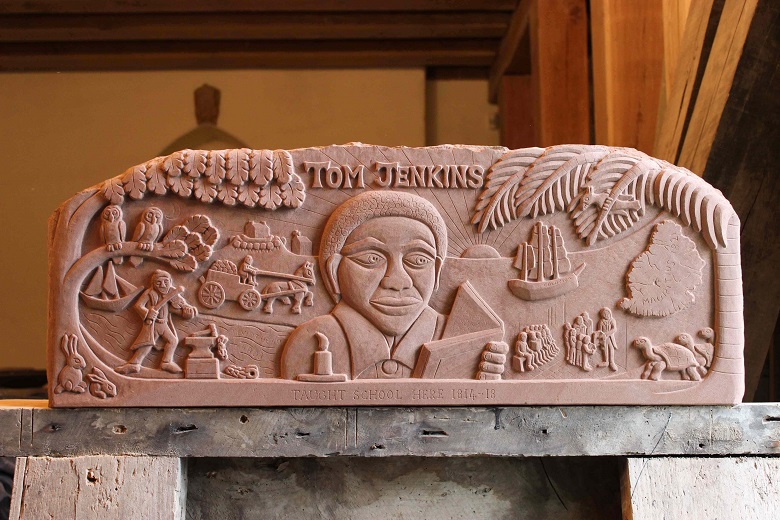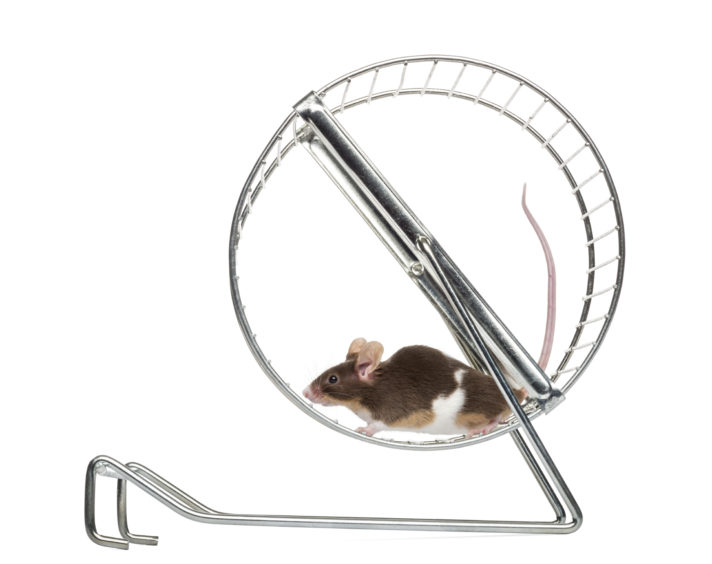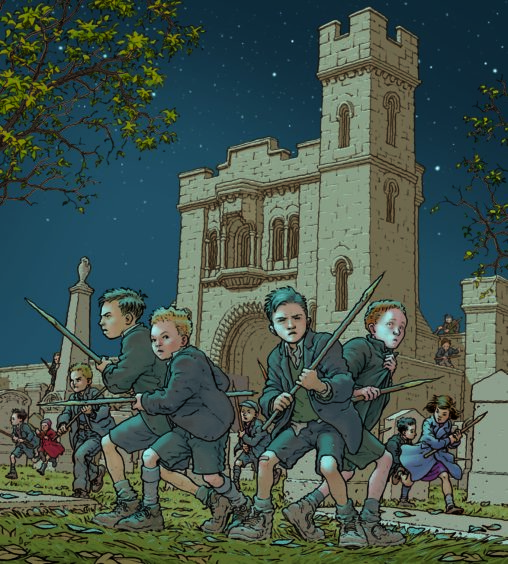
His research into the astonishing but forgotten tales of Scotland have offered Jack McLachlan a little light relief from working on his PhD.
But the jaw-dropping tales unearthed from the archives and posted online have also entertained and intrigued Scots during lockdown.
“In Scotland, we don’t get taught much about our own history,” said the 29-year-old St Andrews University student. “It’s mostly the First and Second World War, key battles like Bannockburn, politics and historical figures. You don’t learn about the things ordinary folk experienced through the centuries. I became fascinated with these obscure stories that were big news centuries ago but forgotten now.”
Jack, who posts his finds on his website Old Weird Scotland, added: “The ethos is the Scots saying ‘Tak tent o sma things’. Instead of focusing on major events, so I try to find less well-known stories.”
Jack, from Fort Augustus in the Highlands, started sharing his historical hobby online six months ago.
But it’s been during lockdown that his posts have truly captured public attention, as his growing fanbase is now informing his research.
“This was a way for me to share tidbits I thought people might find interesting. I never thought it would turn into a big thing, but it’s taken on legs recently. In March, all I saw on Twitter was Covid-19. It was all doom and gloom but a lot of people use social media as an escape. So I decided to ask people to suggest locations for me.
“I’m working through about 150 requests at the moment. People say they lose themselves for an hour or so in the stories and that it helps take their mind off things. I was asked to look for something about Pitlochry and I’m told that the wild story I found became the ‘talk of the town’ that day,” he said.
Jack’s research involves scouring obscure history books, websites and digital libraries and newspaper archives.
His findings include the day a circus lion escaped in Pitlochry, the bizarre tale of a group of Glaswegian children hunting for “the Gorbals vampire” and the skeleton of a “merboy” caught by Newhaven oyster dredgers in 1770.
“You just couldn’t make some of these things up so I’m never short of things to post,” added Jack.“It’s a passion project for me of course but I’m really glad that other people are enjoying it as well.”
Here, Jack shares some of his favourite examples of Old Weird Scotland:
Roaring time in Pitlochry
After I was asked for an Old Weird story about Pitlochry, I discovered that one day in August 1899, locals awoke to an escaped circus lion running through the streets. It attacked a pony but came off worse after the pony bit its neck. Locals caught it by throwing a large tarpaulin over it. Only one man was injured after it stepped on his toes with its claws out.
Someone told me they’d heard of an escaped lion in Blairgowrie but had no details. Sure enough, I found that in 1905, another lion escaped and got stuck in a pie shop. A policeman shot at it but hit an old lady in the leg who was in the shop buying buns!
Shoot out in the wild east
The challenge with larger towns and cities is to find something people haven’t heard about. In Leith, for example, on February 4, 1881, two men thought to have fled to Scotland from Ned Kelly’s bushranger gang in Australia assaulted five people with sticks and pistols on Leith’s Ferry Road. Police caught them trying to break into the Custom House and a Wild West-style chase and shootout ensued down Commercial Street.
A classroom pioneer
Tom Jenkins lived in Teviothead in the Borders, having been sent to Britain to be educated from West Africa by his father, possibly a tribal chief, in 1803. He attended the village school and taught himself maths, Latin and Greek. At 17, Tom was recommended as the new parish school teacher but the presbytery refused to appoint him.
Clearly the best candidate, his community started a salary fund and created an independent school. Tom studied at the University of Edinburgh and became Britain’s first black teacher.
Mice work
In 1825, in what sounds like the worst Dragons’ Den pitch ever, weaver David Hatton unsuccessfully applied for a loan to turn Dunfermline Abbey into a thread factory powered by mice. His working prototype mouse mills were a sensation and many flocked to Dunfermline to see them in action. However, he neither managed to secure investment nor the Abbey premises despite all the interest.
A wiggly tooth
Every week, I try to post a piece of Scottish folklore or an old belief or practice. One of my favourites comes from Sutherland, where it was once thought that toothache could be cured by carrying a live earthworm in your mouth and walking to the next parish with it. It was apparently very important to not speak while this was happening so folk would do it at night, just in case they met a neighbour. It wouldn’t do to pass your neighbour and not say hello!
A mon’s best friend?
Some stories shine a light on what was normal for Scots but would sound weird today. In the 1920s, mongooses were common pets across Scotland and were prized for their extreme mouse-catching ability. Though hunters, they could be quite tame and pet shops couldn’t keep them in stock. Prone to wander, they made startling appearances in a Dundee theatre, a Glasgow sweet shop, and on a busy high street in Port Glasgow.
The bite stuff
This is one of my favourite cases of mass hysteria. In September 1954, about 200 schoolchildren invaded the Southern Necropolis in the Gorbals, Glasgow, armed with sharpened sticks, stones and penknives. They told police they were there to kill a 7ft vampire with iron teeth that had eaten two of their schoolmates. Genuinely scared, the children patrolled the grounds looking for the vampire.
The next night, another crowd of children scaled the walls after the gates were locked. The children even begged a journalist at the scene: “Hiv ye come tae shoot him, Mister? Kill him sae we can sleep tonight!” The ordeal was blamed on comic books and compelled the MP for the Gorbals to introduce the Children and Young Persons (Harmful Publications) Act.
Jenny wi’ the airn teeth,
Come an’ tak’ the bairn:
Tak’ him to your ain den,
Where the bowgie bides,
But first put baith your big teeth
In his wee plump sides
– Alexander Anderson

Enjoy the convenience of having The Sunday Post delivered as a digital ePaper straight to your smartphone, tablet or computer.
Subscribe for only £5.49 a month and enjoy all the benefits of the printed paper as a digital replica.
Subscribe © The Art Archive/Shutterstock
© The Art Archive/Shutterstock
 © Shutterstock
© Shutterstock